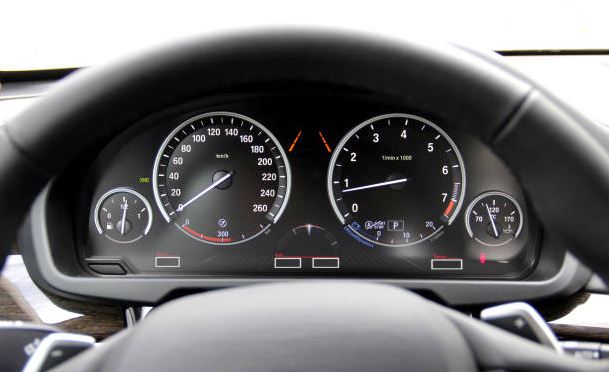According to the Hyundai car manual and technical information, the recommended tire pressure for the Palisade models from 2020 to 2022 is 35 psi for both the front and rear tires, as this also depends on the particular model year, trim, and OEM tire size.
According to the automaker, over- or under-inflation of Palisade original tires can result in shortened tire lifespans, poor vehicle handling, or even sudden tire failure at high speeds, which could result in loss of vehicle control.
We get emails from many Palisade owners asking if they should be inflating their tires according to the manufacturer’s recommendation (35 psi) or if the psi value is there to serve as a guide.
It is important to reiterate that maximum is sometimes optimum for the right tire pressure for Hyundai vehicles.
In the rest of this post, you will see the ideal PSIs you should work with for respective Palisade year models, trims, and tire sizes.
Table of Contents
Tire Pressure Table For Hyundai Palisade Year Models And Trims
| Recommended Tire pressure | |||
| Hyundai Palisade Year Model | Tire Size | Front tire | Rear tire |
| 2022 | 245/50R20 102V | 35 psi | 35 psi |
| 245/60R18 105H | |||
| 2021 | 245/50R20 102V | 35 psi | 35 psi |
| 245/60R18 105H | |||
| 2020 | 245/50R20 102V | 35 psi | 35 psi |
| 245/60R18 105H | |||
| Calligraphy | 245/50R20 102V | 35 psi | 35 psi |
| Limited | 245/50R20 102V | 35 psi | 35 psi |
| SE | 245/60R18 105H | 35 psi | 35 psi |
| SEL | 245/50R20 102V | 35 psi | 35 psi |
| 245/60R18 105H | |||
Will Inflate My Hyundai Palisade Tires Above 35 Psi Increase Mpg?
Hyundai recommends you set the tires to 35 psi (industry standard), but the original tires on the Palisade Limited AWD come with a maximum air pressure rating of 51 psi. With this in mind, many Palisade Limited owners wonder if they can increase the tire pressure to 45 psi for the HWY MPG to increase.
This may likely happen. But it is not a great idea. Here’s why:
Hyundai put the maximum tire pressure rating there to show you how much you should inflate your tires. I recommend you for the psi rating on the sticker attached to your vehicle’s driver’s door jamb because the automaker has set that as the industry standard for a reason.
Increasing the tire pressure above the factory recommendation exposes your tire to quick wear, loss of traction, and even sudden blowout.
You’d agree that these potential defects are more costly than the few mpg you hope to get by overinflating.
In other words, it’s not worth it.
So, when the tires are cold, set the tire pressure to the door jam pressure and leave it. And if you’ve inflated my Hyundai Palisade tires above 35 psi without experiencing this potential harm, you’ve been extremely fortunate thus far.
Let me also mention that when the temperature drops outside, so does your Palisade tire’s inflation. You will likely lose one psi for every 5 degrees of temperature drop. In such a situation, monitor your TPMS signal because underinflated tires can also present a significant danger.
Is It Safe To Drive Palisade With Low Tire Pressure?
It is generally unsafe to continue driving your Hyundai Palisade when you have tires with low PSI, even if it’s 5 psi less than the factory recommended value.
If you try this anyway, you risk experiencing bad cornering, delayed braking distance, and possible tire bursts when driving at high speeds.
Tire Pressure Tips For Hyundai Palisade
The first thing to remember if tire maintenance is a priority is that low pressure can put more strain on your wheels, leading to extensive repairs. But there are other things you should know when thinking about your vehicle’s tire pressure.
- The Hyundai Palisade is equipped with a TPMS Hyundai display on the instrument cluster that makes it quick and easy to check the tire pressure of your front and rear wheels. Doing this each week would help ensure they are all within the manufacturer’s recommended PSI Level.
- Remember that your driving habits can influence the monthly pressure drop in your tires.
- The outside temperature, particularly extreme cold, can cause tire pressures to fluctuate. So take note of this while driving your Palisade in certain weather conditions.
- If your tire is always losing air, ensure you give your tires a good check-over for possible punctures or damages.
- Sometimes, you will fill your tires with the proper psi, but your Hyundai system will still alert you to a tire issue. If that is your situation, you may need a professional to perform a Hyundai TPMS reset.
Conclusion
Hyundai determined that the recommended tire pressure for the Palisade is 35 psi. However, as the temperature drops into fall and winter, your tire air pressure will also drop, which can lead to underinflated tires.
While this is normal, honking the tires in the morning is always safe as the temperature drops.
I hope this helps.

